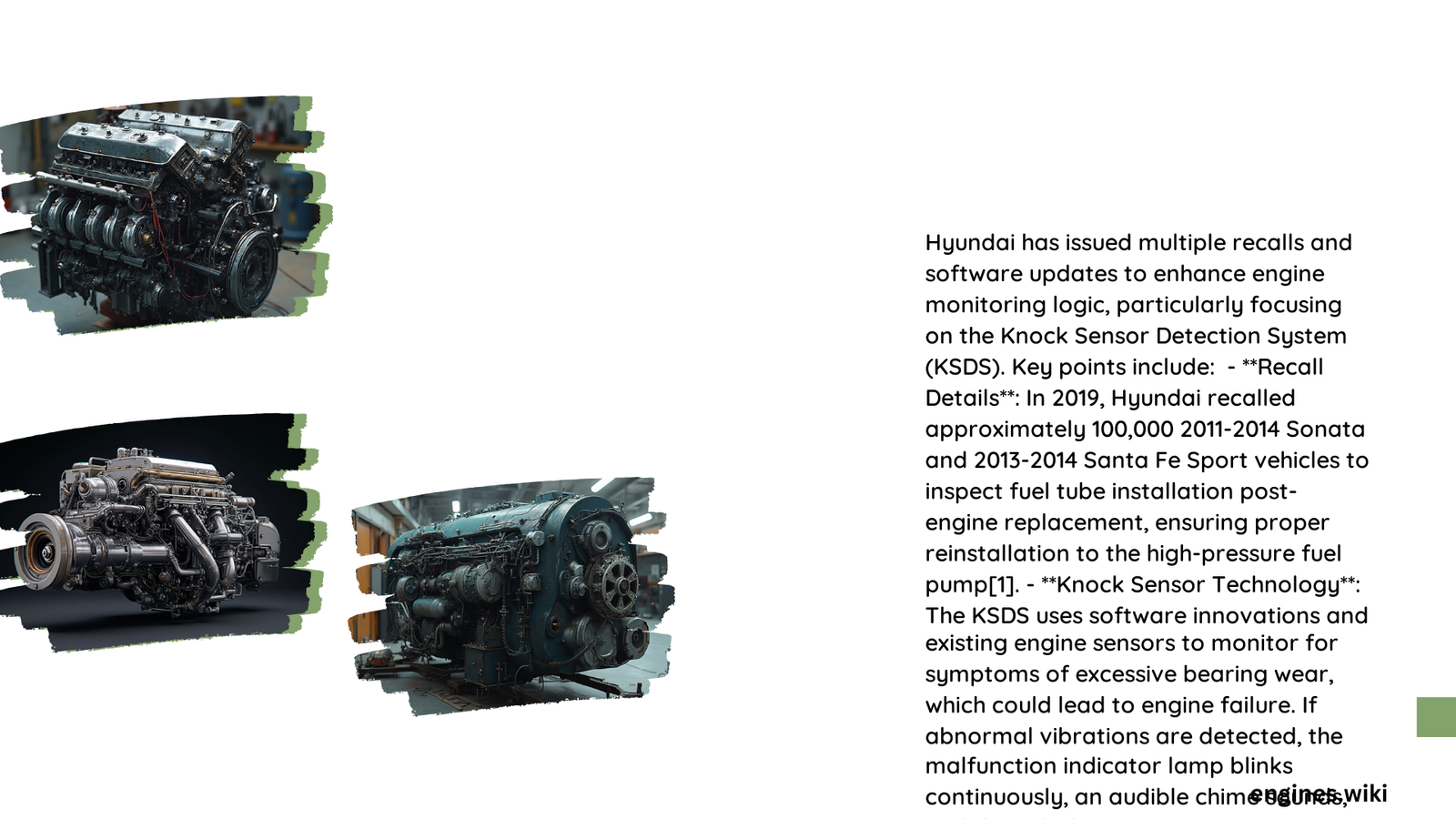Engine Monitoring Logic Recall: Protecting Your Vehicle’s Performance
Modern automotive technology has revolutionized how we detect and prevent potential engine failures through sophisticated engine monitoring logic recall systems. These advanced protocols utilize cutting-edge sensors, real-time data analysis, and intelligent diagnostic algorithms to identify potential mechanical issues before they escalate into catastrophic engine damage.
What Are the Core Components of Engine Monitoring Logic?
Engine monitoring logic recall involves multiple sophisticated detection mechanisms:
Knock Sensor Detection System
- Primary Function: Continuously monitor engine vibrations
- Key Detection Parameters:
- Unusual dynamic patterns
- Connecting rod bearing wear indicators
- Abnormal mechanical stress signals
| Detection Method | Alert Mechanism | Performance Impact |
|---|---|---|
| Vibration Analysis | Malfunction Indicator Lamp | Reduced Engine Power |
| Noise Monitoring | Audible Chime | Speed Limitation |
| Real-Time Sensor Data | ECM Diagnostic Codes | Protective Mode Activation |
How Do Diagnostic Trouble Codes Work?
Diagnostic Trouble Codes (DTCs) serve as critical communication tools between vehicle systems and technicians:
Key DTC Categories
- P1327: Indicates cylinder wall scuffing
- P132600: Signals connecting rod bearing noise
- Performance Implications:
- Immediate system alert
- Reduced vehicle performance
- Prevents potential catastrophic engine failure
What Challenges Exist in Fault Detection?
Implementing robust engine monitoring logic recall systems presents several complex challenges:
- Technological Complexity
- Requires advanced sensor integration
- Demands continuous software updates
-
Needs precise real-time data processing
-
Cost Considerations
- Significant research and development investments
- Ongoing maintenance and update expenses
-
Dealer training and implementation
-
Data Accuracy
- Minimizing false positive readings
- Ensuring consistent sensor performance
- Developing intelligent interpretation algorithms
Why Is Real-Time Monitoring Critical?
Real-time engine monitoring provides immediate benefits:
– Prevents catastrophic mechanical failures
– Reduces long-term repair costs
– Enhances overall vehicle safety
– Provides proactive maintenance insights
Recommended Maintenance Strategies
To maximize engine monitoring effectiveness:
– Regular sensor calibration
– Consistent software updates
– Professional diagnostic assessments
– Adherence to manufacturer recommended maintenance schedules
Technical Specifications
Monitoring Parameters:
– Vibration frequency range: 20-2000 Hz
– Sampling rate: Continuous real-time
– Detection sensitivity: ±0.01mm precision
Conclusion
Engine monitoring logic recall represents a critical advancement in automotive safety technology, providing vehicle owners unprecedented protection and insight into their engine’s health.

